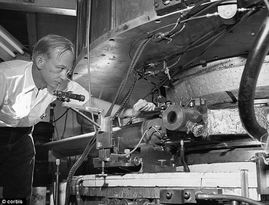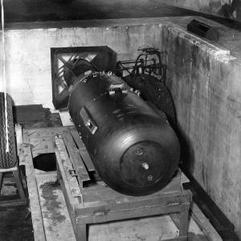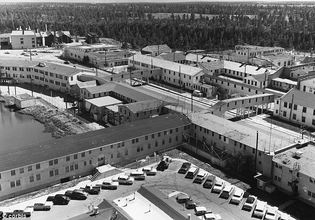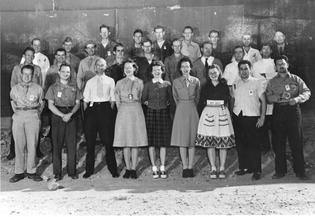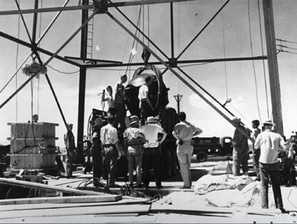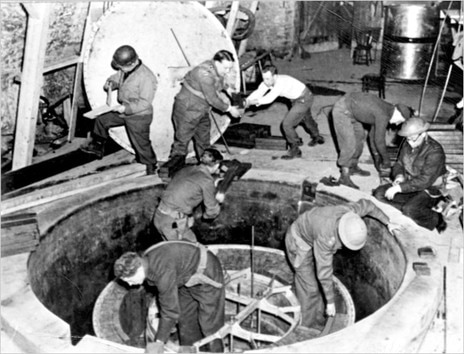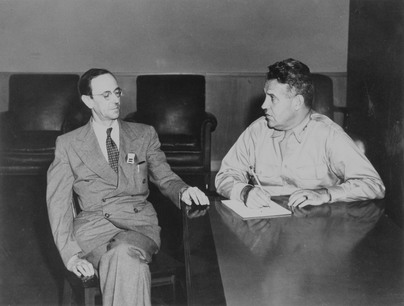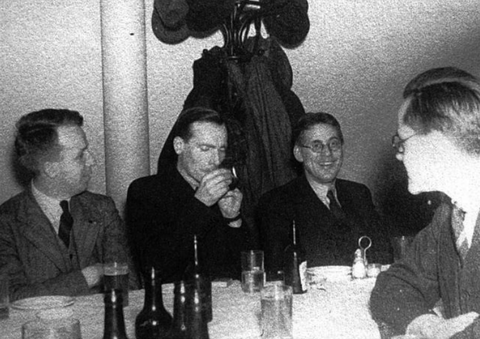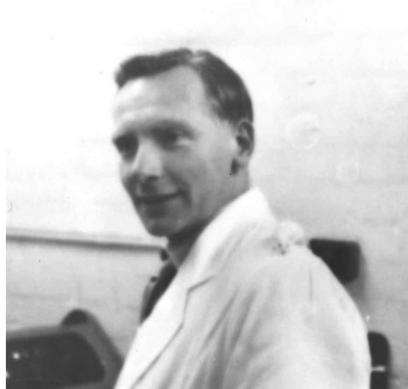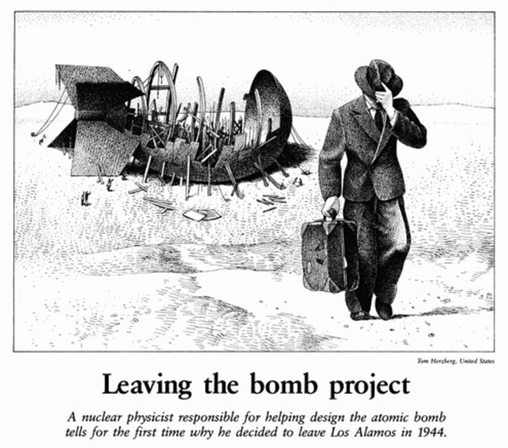Identification badges of Manhattan Project scientists
(Alex Wellerstein)
(Alex Wellerstein)
TAKING A STAND AGAINST THE MANHATTAN PROJECT
In 1944, Rotblat arrived at a base of the Manhattan Project, a secret government research project, in Los Alamos, New Mexico, with Chadwick’s team of British scientists to assist with the construction of the atomic bomb.
Rotblat felt uneasy about joining the project, but he was convinced the bomb was being built as a deterrent to Hitler, who was believed to be attempting to assemble an atomic bomb..
|
"The German experimental nuclear pile at Haigerloch"
(Atomic Heritage Foundation) |
|
During a dinner party, Rotblat overheard General Leslie Groves, the director of the project, tell Chadwick that the bomb was meant for the Soviets, not the Germans.
"It came as a terrible shock to me to hear what Groves said. I started work in order that the bomb should not be used, even against Germany, and here I am told that we are preparing to use it as a method of keeping the Russians subdued!" Rotblat also discovered the Germans stopped working on an atomic bomb, but the Manhattan Project scientists would still be building the bomb for possible future use. Rotblat decided to take a stand by leaving the Manhattan Project, becoming the only scientist to leave the project on a moral basis.
|
"Groves and Chadwick"
(Los Alamos National Laboratory) |
"One day in November 1944 [Chadwick] came to Los Alamos and he told me that he just received intelligence that the Germans had given up their (atomic) project. In fact, they gave it up a long time before, which we didn't know. So, when he told me this, I had definite proof that the Germans were not working on this. I told him straight away, I'm leaving the project."
–Joseph Rotblat in an interview with Michele Ernsting
Joseph Rotblat interview, "War and Peace in the Nuclear Age," 1986
(WGBH Media Library and Archives)
(WGBH Media Library and Archives)
LIFE AFTER THE MANHATTAN PROJECT
After taking a stand against the Manhattan Project, Rotblat applied his knowledge of nuclear physics to medicine instead of weapons at St. Bartholomew’s Hospital Medical College in London. His departure provoked outrage from government officials and suggestions he was a Soviet spy. He was banned from the U.S. until 1951.
“Chadwick found this absurd dossier against my uncle, which claimed that he intended to return to Britain, join the RAF (Royal Air Force), hijack a plane, fly to Poland, parachute into Poland and then hand over what he knew to the Russians. I can’t imagine anything more absurd. On the way back, all his effects disappeared. He had a suitcase in which he had all sorts of things he treasured including pictures of his wife and many other family photographs and many other things he treasured. His case disappeared. Sorry, stolen, can’t trace it. I myself believe that somewhere in the bowels of the FBI that suitcase still exists.”
–Halina Sand, the niece of Joseph Rotblat, in an interview featured in the documentary The Strangest Dream
Dossier against Joseph Rotblat, March 12, 1951 (Federal Bureau of Investigation)
|
"Dinner given by colleagues of the Physics Department at Liverpool University on his return from Los Alamos late 1944."
(Joseph Rotblat: Visionary for Peace) |
"1958, as Chief Physicist at St. Bartholomew's Hospital, London, in the Animal Laboratory with one of Professor Lindop's Mice."
(Joseph Rotblat: Visionary for Peace) |
Rotblat's Bulletin of Atomic Scientists article, August 1985
(Bulletin of Atomic Scientists)
(Bulletin of Atomic Scientists)
